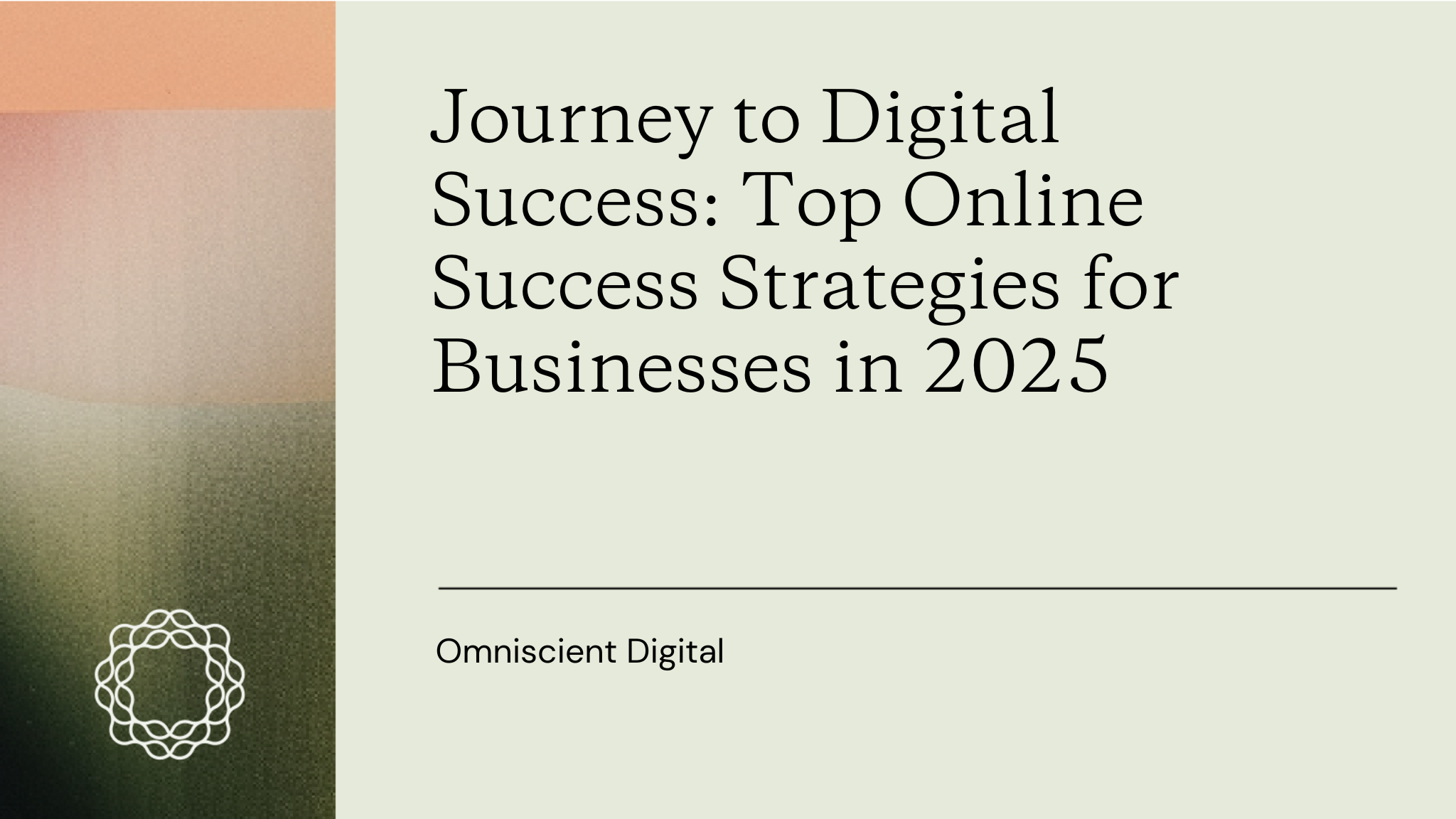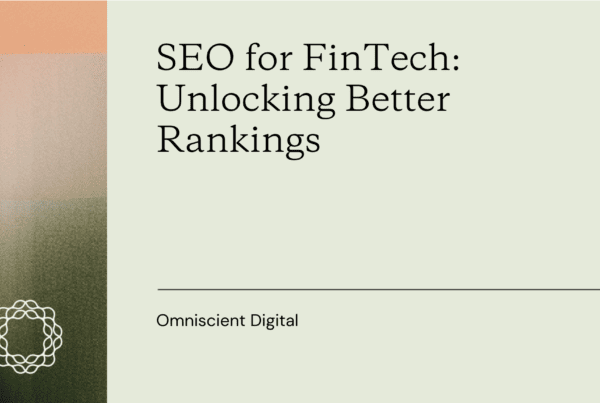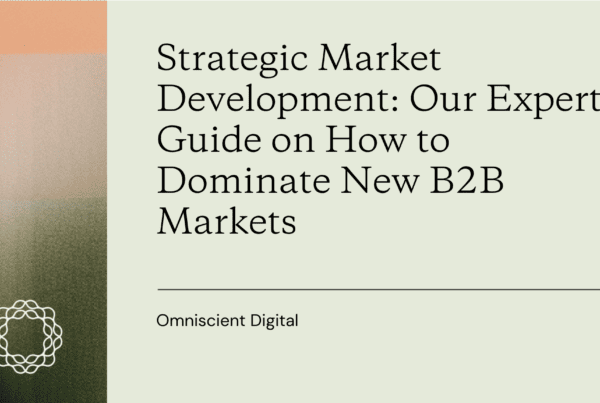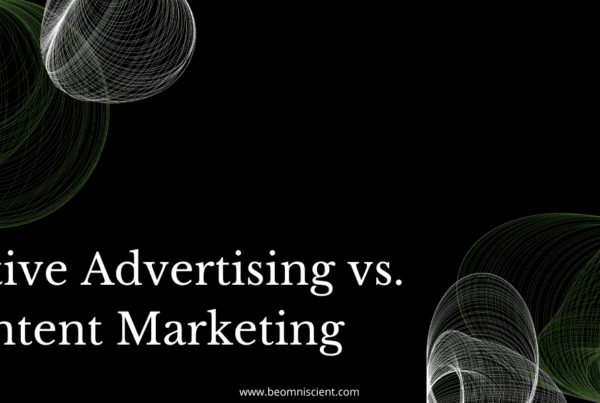
Imagine pouring thousands of dollars into online advertising only to see minimal returns. Or perhaps your website remains buried deep within search engine results despite countless hours of effort. With billions of users worldwide and a myriad of brands vying for their attention, businesses need a winning strategy.
That’s where digital marketing comes into the picture. From optimizing search engine visibility to engaging the target audience on social media, digital marketing is a multifaceted approach that involves all types of online marketing techniques to help you reach your target audience.
These key statistics emphasize key components of digital marketing and help you discover what will really drive online success in 2025.
1. Search engine optimization (SEO)
SEO is one of the best ways to enhance your website’s visibility in search engine results, driving organic traffic and improving return on investment (ROI).
Organic search: the top traffic driver. Organic search drives the most visibility, accounting for 53.3% of all website traffic, and leading to a strong ROI from SEO efforts. The ROI on Google organic search traffic is 5.3X, compared to 2X from paid search. (Stratabeat.com)

Organic search accounts for 27% of all visits according to HubSpot’s State of Marketing Trends, followed by direct traffic at 22% and social with 16%.
Link Building can prove to be a costly but effective pursuit. Many SEO experts invest heavily in link building, with nearly half spending between $5,000 and $10,000 monthly. (uSERP)
Despite the cost of the link-building strategy, it has proven to be worth the investment. In an analysis of 11.8 million Google search results, Backlinko found that the top-ranking page has, on average, 3.8x more backlinks than pages in positions 2–10. (Backlinko)
Experience is the new E in E-A-T: first-hand knowledge is now a ranking factor. First-hand experience of content creators is now a critical ranking factor, adding a new dimension to the E-A-T (Expertise, Authority, Trust) criteria. This shows that Google now wants to see real-life insights and knowledge in content, not just general information. So, sharing personal experiences and genuine insights is a key part of content marketing best practices. (Google)
The importance of long-tail keywords in driving conversions. Long-tail keywords are specific search queries with lower search volumes, but they make up the majority of overall searches on Google. These keywords often lead to higher conversions, as users searching for them are more likely to take action. (SEMRush)
2. Paid ads
Paid ads help you reach and engage customers, drive traffic, and increase sales. Let’s dive into the data.
Impressive ROI with Google Ads. Google estimates that businesses using Google Ads can achieve a ROI of 800%! (Google)
Average click-through rates for shopping ads by platform. The average click-through rate (CTR) for shopping ads varies by platform, with Google Ads seeing an average CTR of 0.86%, while Bing Ads experiences a higher average CTR of 1.25%. (WordStream)
Average Google Ads costs in 2024. In 2024, businesses spent anywhere from $100 to $10,000 per month on Google Ads. The cost per click (CPC) typically ranges from $0.11 to $0.50, while the cost per thousand impressions (CPM) can vary between $0.51 and $1000. (Webfx)
Google Ads is the top choice for the majority of brands. Google Ads is the preferred platform for pay-per-click (PPC) advertising, with 80% of businesses worldwide choosing it as their go-to option. (DemandSage)
The increasing role of AI in paid advertising. In a global survey conducted by marketers, 32% of respondents reported using artificial intelligence (AI) alongside marketing automation for paid advertising. (Statista)
Projected changes in ad spending segments. All ad spending segments are likely to experience significant fluctuations over time. However, video advertising on mobile platforms stands out, with a substantial projected increase. This segment is estimated to grow by $72.15 billion between 2019 and 2028. (Statista)
3. Social media marketing
Social media marketing involves using channels like Facebook, Instagram, LinkedIn, TikTok, and more to boost brand awareness and customer engagement with tools like WhatsApp automation enhancing communication efficiency. But before you craft your social media strategy, here are some key trends and ROI stats to consider:
Facebook and Instagram are the top Social Media Platforms for ROI. A survey of B2B and B2C marketers worldwide found that 29% of respondents considered Facebook and Instagram the top social media platforms for ROI that year. YouTube was third with 26%, and TikTok followed with 24%. (Statista)

Projected social media advertising and mobile spend. Social media advertising spending is expected to reach $276.70 billion in 2025, the ad spending is expected to reach a market volume of $406.50 billion by 2029. (Statista)
Social Media usage growth. In 2024, over five billion people worldwide were using social media. This number is expected to rise to more than six billion by 2028. (Statista)
Facebook and Instagram dominate among social media marketers. A global survey revealed that 89% of social media marketers used Facebook to promote their businesses, while 80% used Instagram for the same purpose. (Statista)
4. Email marketing
Email marketing is one of the best ways to reach your target audience directly. By delivering personalized messages straight to inboxes, you can nurture leads and build customer loyalty. Let’s explore the latest trends and ROI stats.
The high ROI of email marketing. According to Litmus, email marketing remains the top choice for ROI, delivering an impressive $36 for every $1 spent. This insight comes from a survey of over 2,000 marketers who helped identify the trends driving these strong returns. (Litmus)
Email marketing ROI by industry
Different industries experience varying returns on investment (ROI) from email marketing.
- The Retail, Ecommerce, & Consumer Goods sector leads with an ROI of 45:1
- Media, Publishing, Events, Sports, & Entertainment achieve a 32:1 ROI
- The Software & Technology industry sees a 36:1 ROI
- Marketing, PR, & Advertising Agencies reach a 42:1 ROI

Average costs of email marketing. A survey found that companies spend an average of $9 to $1,000 monthly on email marketing. (Beehiive.com)
Most businesses typically invest $751 to $1,000 monthly in paid email marketing tools while spending $51 to $500 monthly on email marketing agency services. (WebFX)
Email Marketing emerges as a key channel for content distribution. According to the Content Marketing Institute, 69% of marketers use email marketing to share their content. This makes email the third most popular content distribution channel after a company’s official website and blog. (Content Marketing Institute)
Email open rates: Average newsletter vs. welcome emails. The average email newsletter open rate is 12.84%. However, special campaigns like welcome emails have a much higher open rate of about 83%, making them an essential part of your email campaign strategy for audience engagement. (GetResponse).
5. Mobile marketing
With over half of internet users accessing content through mobile devices, optimizing your marketing campaigns for mobile is crucial. Unsure why it’s so important? Here are the key statistics and trends:
Mobile phones drive over half of website traffic. 52% of all website traffic comes from mobile phones. This means that you risk alienating more than half of your target audience if you don’t optimize your websites and campaigns for mobile devices. (Statista)
The web traffic through laptops and desktops is decreasing by 3%, while the traffic from mobile phones is increasing at a rate of 4% (Digital Marketing Community)
The growing role of mobile in social media advertising. By 2028, mobile will account for $255.8 billion of the total social media advertising spend, highlighting the growing importance of mobile platforms for marketers. (Keywordseverywhere.com)
Video and thought leadership content tops B2B marketers’ content marketing priorities. 69% of B2B marketers plan to increase their investment in video content, making it their top priority.
Following the video, they plan to focus on thought leadership content (53%), in-person events (47%), and paid advertising (43%).
Other areas of interest include online community building (33%), webinars (33%), audio content (25%), digital events (21%), and hybrid events (11%). (Content Marketing Institute)
6. Video marketing
With attention spans shrinking, video offers a great way to engage audiences and convey your message. Let’s explore the numbers behind the rise in video marketing:
Marketers agree that video marketing delivers strong ROI. 90% of marketers report that video marketing provides them with a good ROI. (Wyzowl)
Here’s how they measure the video marketing ROI:
- 60% look at video engagement (likes, shares, reposts).
- 42% focus on customer engagement and retention.
- 40% count video views.
- 39% assess brand awareness and PR.
- 32% track bottom-line sales.
- 28% monitor leads and clicks.
Short-form video leads in content ROI. Short-form video content provides the highest ROI and will attract more investment than other formats. Currently, 44% of marketers produce short-form videos regularly. (HubSpot)
Video marketing budgets by spending range. Video marketers have varying budgets for average video production:
- 42% spend $0 to $500.
- 18% spend $501 to $1,000.
- 25% spend $1,001 to $5,000.
- 9% spend $5,001 to $10,000.
- 3% spend $10,001 to $20,000.
- 4% spend over $20,000.

Most marketers keep video production costs under $1,000, indicating a preference for cost-effective video strategies. A smaller portion does allocate higher budgets, suggesting that high-budget videos are reserved for special projects or larger campaigns.
Why are marketers now increasingly turning to video marketing?
In 2022, many marketers began using video for the first time, driven by various factors like:
- 41% found it easier to create videos in-house.
- 39% succeeded in convincing others of the value of video content.
- 34% appreciated the quicker and less time-consuming video creation process.
- 30% saw benefits from the reduced costs of video production.
- 22% gained a clearer understanding of the video’s ROI.
- 20% needed video content to address new challenges.
The rise in video adoption shows the growing importance of video in marketing strategies. The ease of creation, lower costs, and a tangible ROI are some of the few reasons businesses are increasingly creating videos for brand awareness and overall marketing.
Live streaming dominates the video-streaming market. The live-streaming market was valued at $60.23 billion in 2023. Revenue is expected to grow by 27% annually from 2024 to 2030, reaching nearly $320.98 billion by the end of the period. (Maximize Marketing Research)
As the market expands, businesses might want to invest in live-streaming to capitalize on this growing trend and boost brand awareness.
7. Influencer marketing
Not everyone can hire A-list celebrities to endorse their products. Partnering with social media influencers is an excellent alternative, allowing you to tap into new audiences, boost credibility, and drive sales. Many influencers now use digital storefront apps, like Creator Hero, to showcase products within social media platforms. Partnering with them can directly drive sales growth. Let’s explore the numbers behind this new-age marketing medium:
High ROI in influencer marketing
Businesses are seeing an average return of $5.20 for every $1 spent on influencer marketing. The top 13% of businesses are achieving even greater success, earning $20 or more for every $1 invested. (Influencer Marketing Hub)
Growth in the influencer marketing spend in the US. U.S. spending on influencer marketing has increased from $3.69 billion to $4.14 billion since 2022. (Statista)
Average costs for mega-influencer posts. The costs for posts from mega-influencers (those with more than 1 million followers) in recent years were:
- $1,200 per post on TikTok
- $1,210 per post on Instagram
- $2,500 per sponsored video on YouTube
Influencer costs vary by platform, with YouTube being the most expensive, followed by Instagram. Brands need to consider these price differences before they plan their influencer marketing budgets and strategies.

Most appealing influencer personalities for social media followers. Consumers are drawn to different types of influencer personalities on social media:
- 61% prefer relatable personalities.
- 43% are attracted to expert personalities.
- 32% like just-for-fun personalities.
- 28% follow aspirational personalities.
Influencers should focus on being relatable, knowledgeable, and genuine to attract and engage followers. This also means that brands should consider hiring influencers who display these qualities, especially relatability, to resonate better with their audience.
Decline in celebrity influencer interest. Only 11% of consumers are interested in celebrity influencers, a drop from 17-22% in previous years. When learning about a company, product, or brand, 39% of consumers prioritize authenticity above all. (Matter Communications)
Small influencers are gaining more popularity among marketers. Brands are increasingly partnering with smaller influencers:
- 44% choose nano-influencers (1K-10K followers), up from 39%.
- 25.7% opt for micro-influencers (10K-100K followers), down from 30%.
Fewer brands are focusing on larger influencers: 17.4% select macro-influencers (down from 19%), and 12.9% choose mega/celebrity influencers (slightly up from 12%). (Influencer Marketing Hub)
8. Customer experience (CX)
Customer experience is everything—especially to inspire customer loyalty. Here are some key statistics that highlight the importance of customer-centric strategies:
Positive impact of improving customer experience on sales revenue. Companies focusing on improving their customer experience have seen sales revenues increase by 2% to 7% and profitability rise by 1% to 2%. (McKinsey & Company)
The growing value of customer experience management. The customer experience management industry was worth $11.34 billion in 2022 and is set to reach $32.53 billion by 2029. This rapid growth shows just how crucial customer satisfaction has become for businesses. (LawnStarter)
Consumers want brands to share relevant content to build trust. 72% of consumers believe that receiving relevant content at the right time and place enhances their trust in a brand. Among Gen Z and Millennials, over a quarter say it increases their trust “a lot.” (Adobe)
Key takeaways for online success
The first step to achieving online success requires a deep insight into current trends and statistics. Understanding the ROI, spending habits, and emerging trends across different digital marketing strategies will help you make data-driven decisions to boost your brand’s presence.
While there’s no one-size-fits-all approach, these insights provide a solid foundation for building a thriving digital strategy in 2025.



